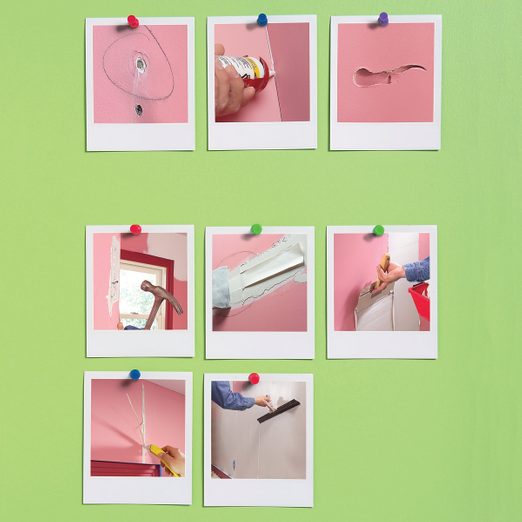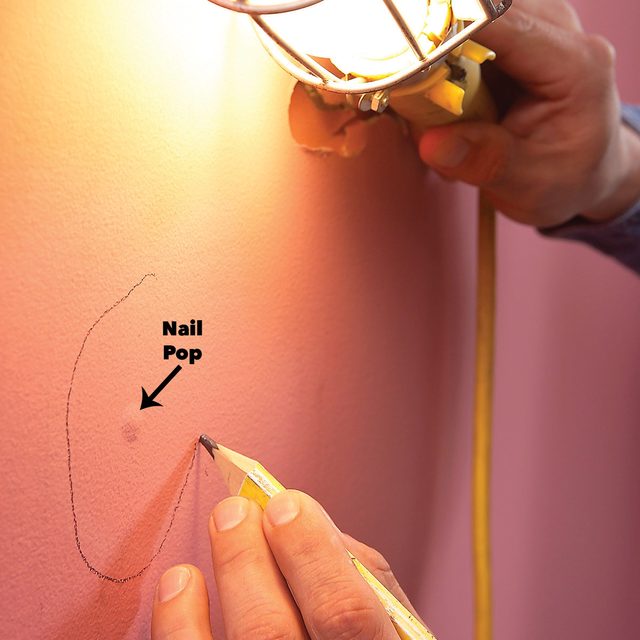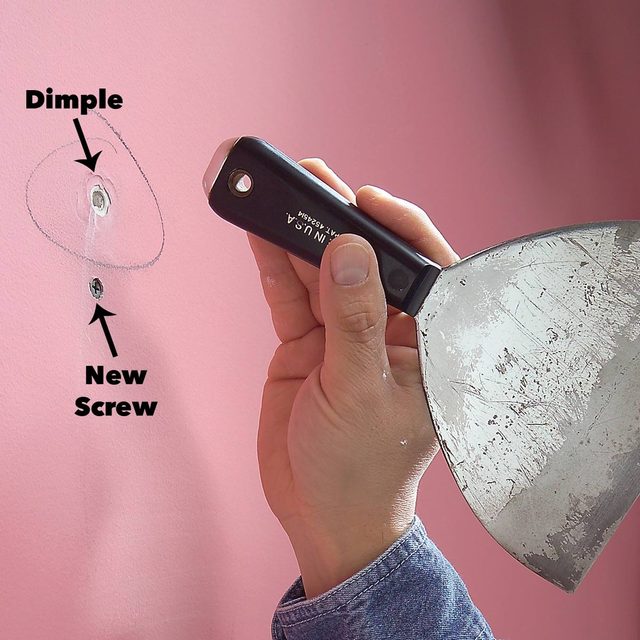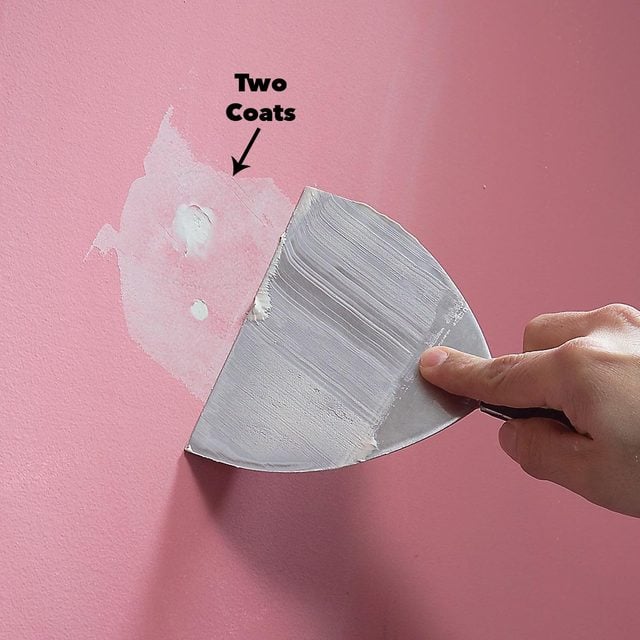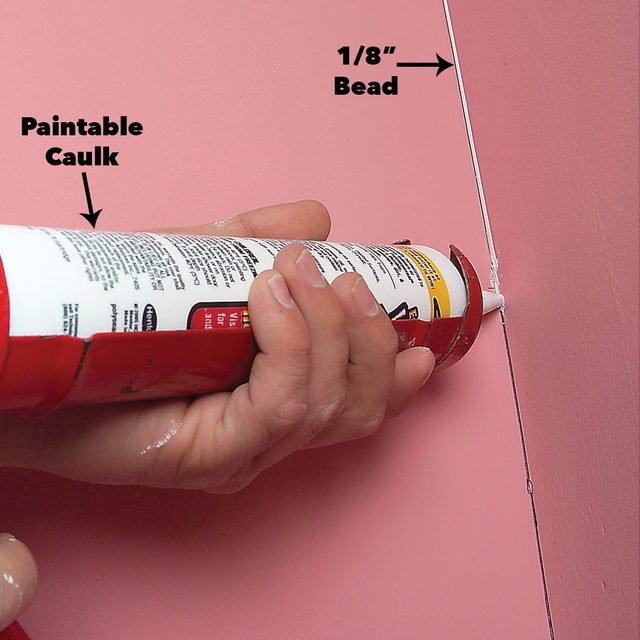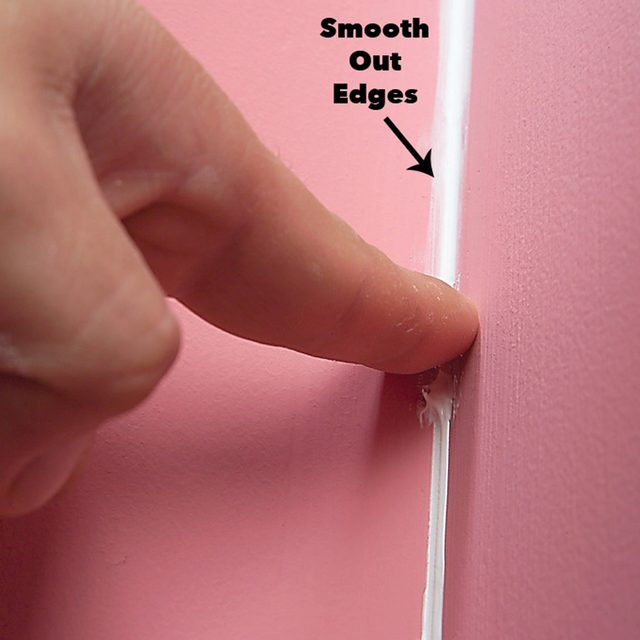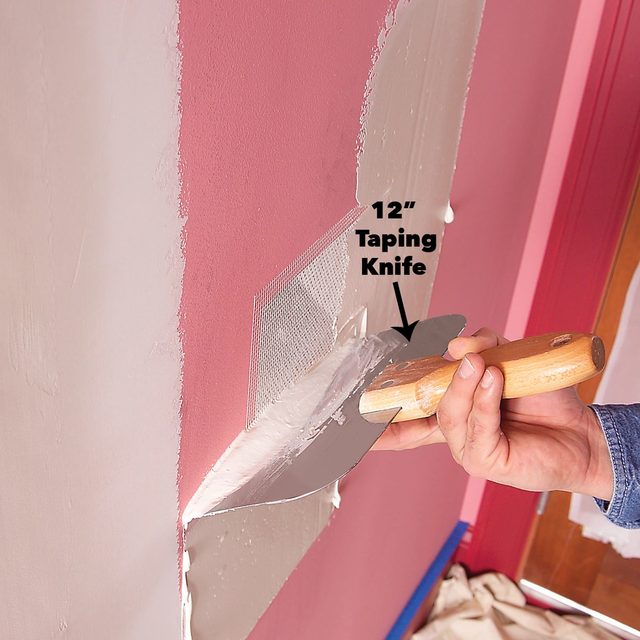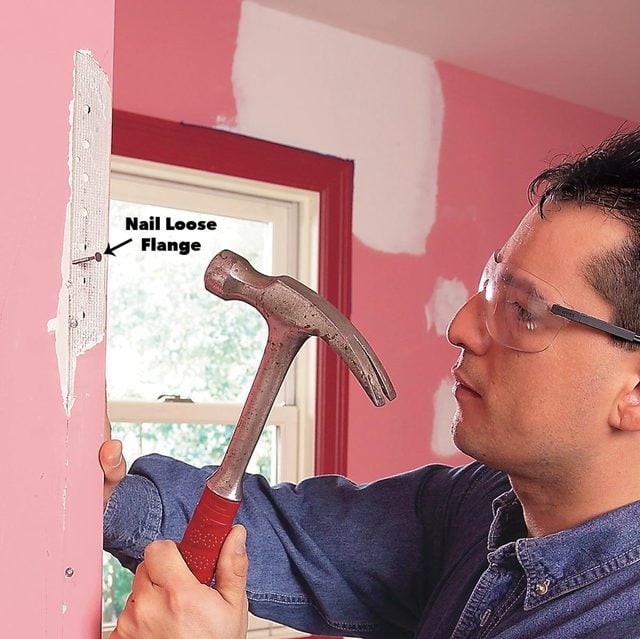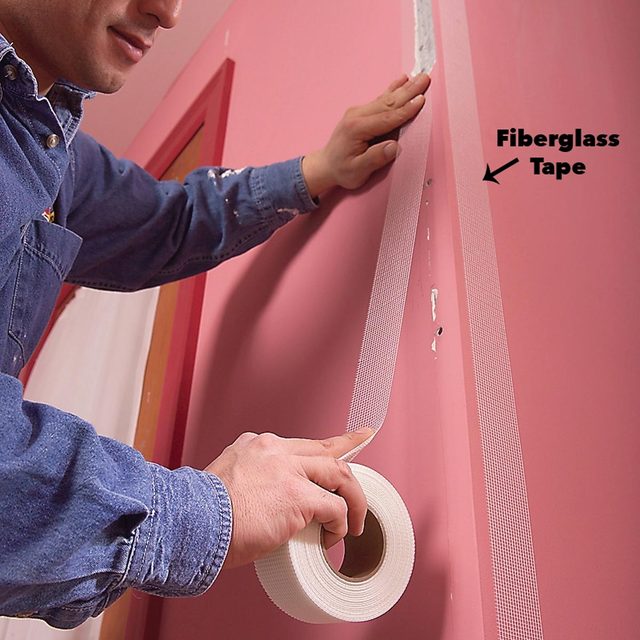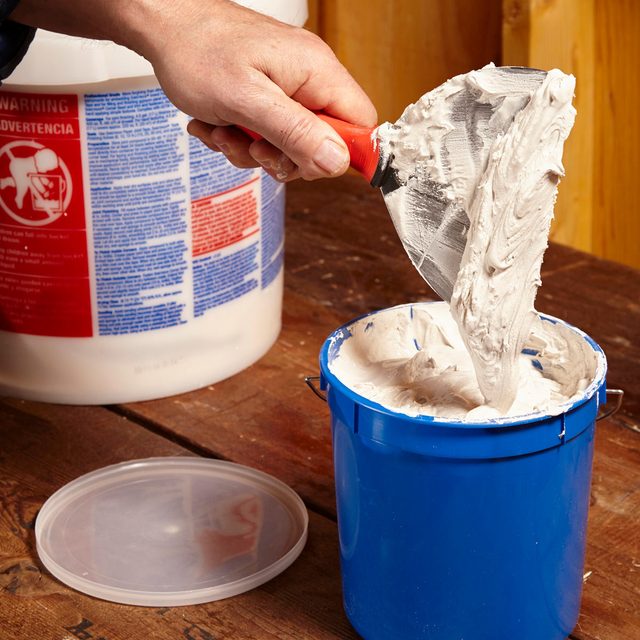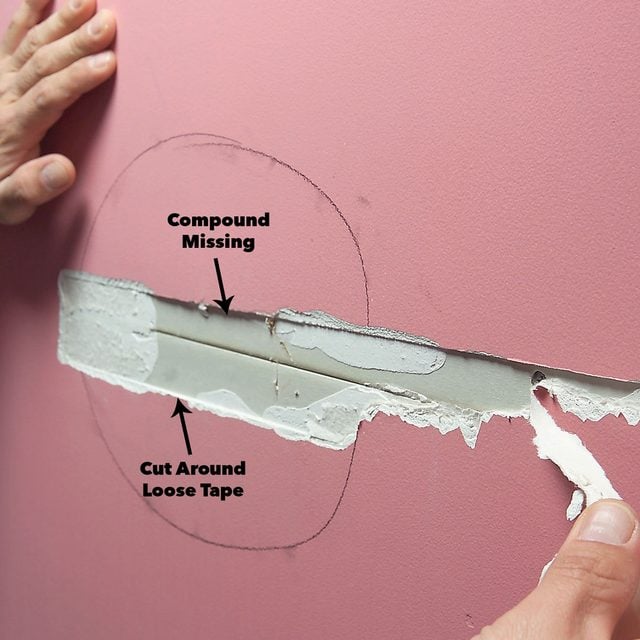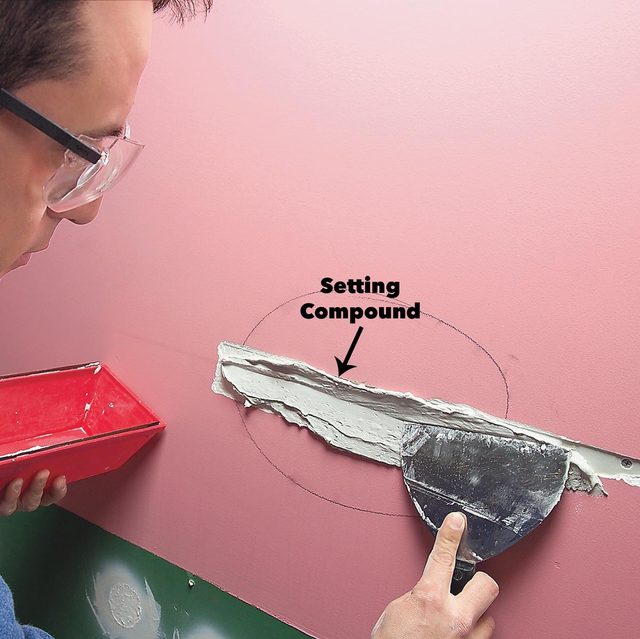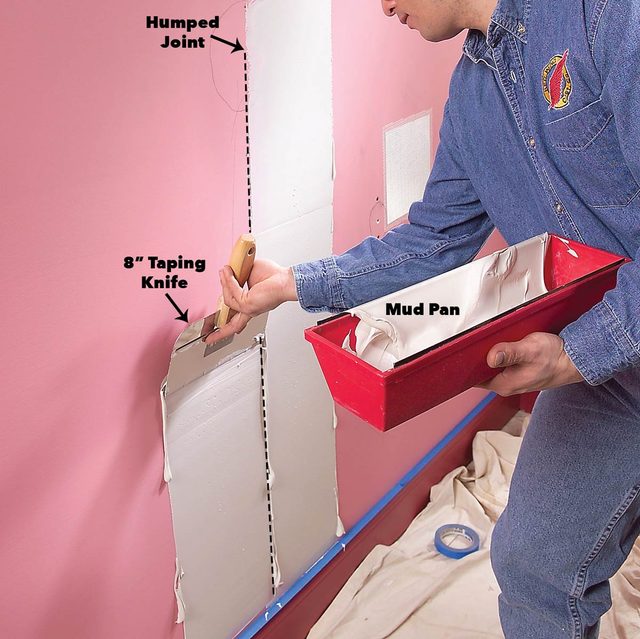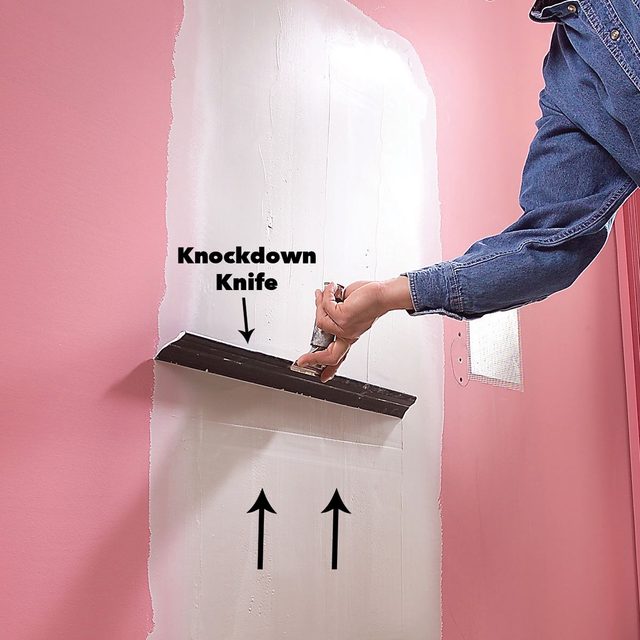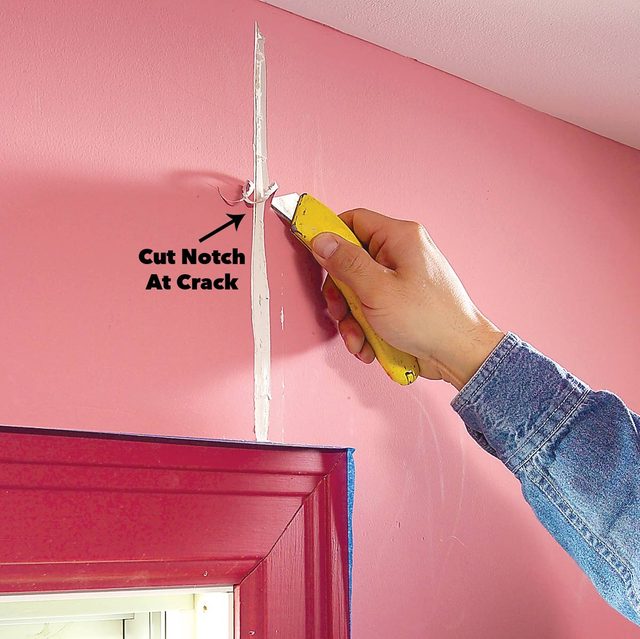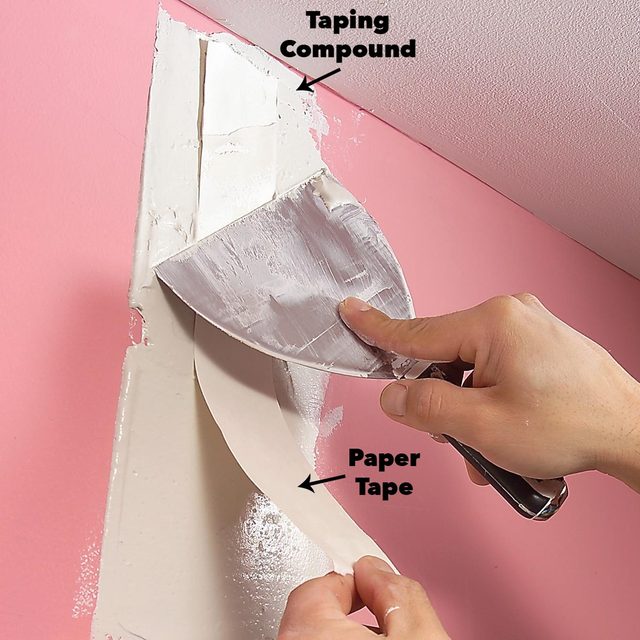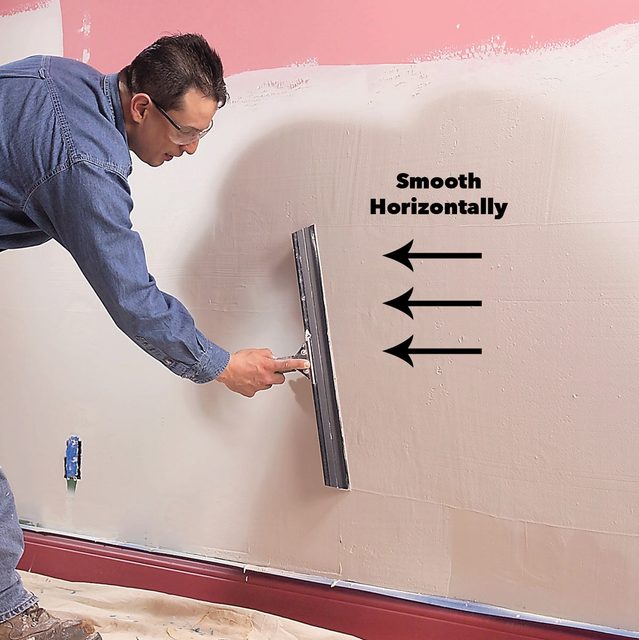How to Paint Walls: Prepare Interior Walls for Painting
Learn fixes for the 8 most common drywall flaws.
Our editors and experts handpick every product we feature. We may earn a commission from your purchases.
Introduction
Quick fixes for the 8 most common drywall flaws, including nail pops, cracks at corners, bubbled or loose tape and holes. Fix them right before you paint for a longer lasting paint job.Tools Required
- Caulk gun
- Hammer
- Knockdown knife
- Mud pan
- Utility knife
Materials Required
- Acrylic caulk
- Drywall compound
- Mesh tape
- Metal patching fabric
- Paper tape
Video: How to Paint New Drywall, Prep and Paint a Room
We’ll show you how to prep and how to paint new drywall in any room in just one morning – including all that messy clean-up. Your results will rival any painting job done by a pro.
Let’s face it—no wall is perfect. And if you want to rejuvenate a room with fresh paint, it’ll look a whole lot better if you repair and smooth out those beat-up walls first. Some flaws, such as shoddy taping work, have been around since day one. Others, like cracks and nail pops, start showing up months or years later as the house ages. And still, others are just insults from day-to-day living: dents from doorknobs, dents from furniture, holes from shelving and picture hangers. The good news is that you can fix all these problems. You only need a few inexpensive tools and a bit of finesse. With our tips, some patience and a keen eye, even beginners can get good results.
In this article, we’ll show you how to repair and cover the most common drywall flaws so that they’ll be all but invisible after that new coat of paint. The fixes are ordered from the most common and easiest to ones that are less common but more challenging.
We’ve hung and patched and primed and finished our fair share of drywall. Check out this compilation of 20 tips for working with drywall to make your next build or repair easier.
Project step-by-step (20)
First, Find the Flaws with a Utility Light
To find the problems, inspect the entire wall surface by holding a utility light close to the wall and “raking” across the surface. The light will highlight wall flaws that aren’t obvious to the unaided eye. Circle each problem area with a pencil (not a pen or marker, which may bleed through paint later) to mark it for repair.
Fill Nail Pops and Small Holes
Nail pops are usually caused by fasteners that are driven through the drywall paper during installation, or by a gap between the drywall and the stud. Then vibration and seasonal wood swelling and shrinkage cause the overlying filler to pop out from the wall. Drive in another 1-1/4-in. drywall screw near the nail pop so the head penetrates just below but not through the drywall paper. Then remove the old screw by pushing the screw gun tip through the middle of the nail pop and backing out the screw. If it’s a drywall nail, drive it into the stud with a nail set and leave a concave dimple.
Fill with Drywall Compound
Apply two coats of drywall compound over the new screw head and dimple, sand lightly and prime before painting.
Caulk Cracks at Inside Corners
Hairline cracks at inside corners usually signal slight movement between adjoining walls. Choose any type of latex caulk and cut the tip just short enough to leave a 1/8-in. hole in the end. Squeeze a narrow line of caulk directly over the crack.
Smooth the Caulk
Then mold the wet caulk into the corner to avoid unsightly build-ups with a moistened finger. The caulk will remain flexible and keep the crack from reappearing. Avoid thick layers of caulk, which may look too rounded in a square corner.
Patch Medium-Size Holes
Large holes still require old-fashioned fixes that include cutting out a square chunk of drywall around the hole, installing backing, adding a drywall patch and then taping the wound. But holes under 6 in. in diameter can be more easily repaired with a self-adhesive drywall patch. Select a size that’ll overlap the sides of the hole by at least 1 in. Pick away any loose chunks of paper or gypsum that protrude above the surface. Then peel off the backing and stick the patch in place.
Apply Drywall Compound
Spread a wide, thin layer of mud over the patch and the surrounding wall. The thin metal patch is perforated so the mud can penetrate and lock it in place. After the first coat dries, spread a second layer of mud to fill in imperfections and low spots, then sand when dry.
Nail, Tape and Mud Cracked Corners
If a metal corner bead is badly dented or damaged, your only option is to pry it off and replace it. That’s a big job because you’ll have to remove and reinstall the base trim as part of the project. But if only the edges are popping through the surface or there’s a hairline crack along the flange, you can fix it. (Chances are the flange of the corner bead wasn’t nailed securely or the taper neglected to tape the edges.)
Drive 1-1/4-in. drywall nails through any corner bead edges that are loose, using as many nails as needed to hold the flange flat to the wall.
Tape the Flanges
Center fiberglass mesh tape over the flange over the entire length of the corner bead. Spread two coats of joint compound over the mesh tape, using the corner of the bead as a guide for the taping knife. If you have a corner that’s in a vulnerable spot and constantly gets bumped, use “setting” compound for the first coat and regular joint compound for the second one. Setting compound is much tougher and won’t crack nearly as easily. But be careful to apply even coats that don’t project beyond the corner or leave humps or tool marks. Setting compound is very hard to sand.
Editor’s Note: Mud Basics
Most of the fixes in this story require at least two coats of taping compound. Compound is too thick to use right out of the bucket, so mix in small amounts of water until you get a smooth, mashed potato-like consistency. Use a slightly runnier mix for embedding paper tape. Let each coat dry completely (usually overnight) before applying another coat. If you have leftover ridges from tools, let them dry and scrape them off with a putty knife before adding the next coat. With the first coat, don’t worry about craters, scratches or other small flaws. Just try to avoid large humps and make sure any patches are covered. The second coat is to fill in and smooth out any voids or low spots.
Generally, larger patches call for wider coats of drywall compound to mask them. That way, higher areas from patches or existing humps can be feathered out over wide areas so the wall will appear flatter. The most common mistake is to use narrow rather than wide swaths of compound over patches and humps. Strive for a thickness of 1/8 in. or so over the fix and feather the edges flush with the drywall. Sand all the fixes with 120-grit drywall sandpaper. Use a handheld sander for small jobs and a pole sander for big jobs. Check your work with the light again after sanding to look for areas that need more work. You can always add a third or even fourth coat of joint compound to fix any remaining problems.
Cut Out and Replace Loose Tape
If the tape is blistering or lifting away from the wall, it’s because there wasn’t enough joint compound under the tape to anchor it to the drywall in the first place. The solution is to cut through the paint and joint compound and peel every bit of loose tape away from the wall to expose the surface behind. Be aggressive with this step, even cutting and peeling tape beyond the evident crack. There’s bound to be more poorly anchored tape that just hasn’t come loose yet. You can tell just by looking at the lack of compound on the drywall surface behind.
Fill the Hole
After cutting loose material away, fill the hole with setting compound. Mix setting compound (which doesn’t shrink) and fill the hole. Don’t overfill.
Apply Tape
When the compound hardens, embed a strip of paper tape in taping compound a few inches beyond and directly over the patch. Then overlay two wide swaths of taping regular drywall compound to blend the patch into the wall.
Taper Humped Joints
Butt joints (where drywall joins at the ends) often have unsightly humps left from built-up and/or poorly feathered edges when the walls were originally taped. (These really show up with the raking light.) Fix them by overlaying a wider layer of compound to blend the hump in with the surrounding wall. Apply the first layer of compound with a taping knife, working from the bottom to the top of the hump (most of the time these will be vertical joints). Use a little more pressure on the knife edges on both sides of the hump to help feather (taper) the edges. Strive for an overall width of at least 2 ft. for the patch.
Smooth with a Knockdown Knife
Immediately after applying the first coat, drag a knockdown knife over the wet compound, smoothing the edges flat against the drywall. (A knockdown knife has a 22-in.-long rubber blade.) Wait too long with this step, even a few minutes, and the rubber blade will drag in the mud and you’ll have poor results. Let the first coat dry, smooth it and apply a second, slightly wider and thinner coat with the same techniques. Check out your patch with a raking light while sanding, and add more coats if needed to fill in low spots, craters or grooves.
Carve Out and Fill Joint Cracks
Midwall cracks are tricky to fix and may crack again, so there are no promises here. That’s because the cracks usually occur at the corners of windows, doors and other openings, which are the weakest points in the framing. Seasonal movement or foundation shifting shows up there, especially if the drywall hanger put a joint at that spot. If so, the only sure fix is to tear off the drywall and seam new pieces near the center of the opening.
However, try this fix first. Carve a 1/2-in.-wide by 1/2-in.-deep “V” with a utility knife in the center of the crack.
Fill the Gap
Fill the crack with setting compound and let it harden.
Tape the Gap
Then embed paper tape in taping compound directly over the patch and overlay it with two or more wide layers of regular taping compound.
Skim Coat Large Damaged Areas: Smooth Vertically
If there’s significant damage over a large area of drywall, the only answer is to “skim coat” the entire area. That means covering the surface with a thin layer of joint compound to bury the damage. Tackle one area at a time, preferably areas no larger than 4 x 4 ft., at least until you get the hang of applying and smoothing larger areas of compound.
Prepare the wall by picking away any loose edges of drywall facing paper. Prime the leftover raw paper with any type of priming paint to seal the raw paper. (Kilz is a great product to use for this step because it seals well and dries fast.) Dab at the wet paint with a foam brush or rag to saturate the paper and wipe away any runs. Let the paint dry and lightly sand away any standing paper nubs. If you sand through the paint and expose fresh paper, paint it again or the paper will absorb moisture from the taping compound and paint and show through later.
How to paint new drywall: Trowel on the compound with overlapping vertical strokes. Then make a series of overlapping vertical strokes with a knockdown knife to smooth out tool marks and fill in low spots.
Smooth Horizontally
Next, make a series of overlapping horizontal strokes, again with the knockdown knife. Work quickly so the thin coat of mud doesn’t begin to dry. If you did a good job of applying and smoothing the joint compound, you’ll only need one coat. But if after sanding the wall, you find some uneven areas, trowel on more taping compound wherever it’s needed to fill in problem spots and sand again.
Now that your drywall is all fixed, check out our expert painting tips to get your job done right.
